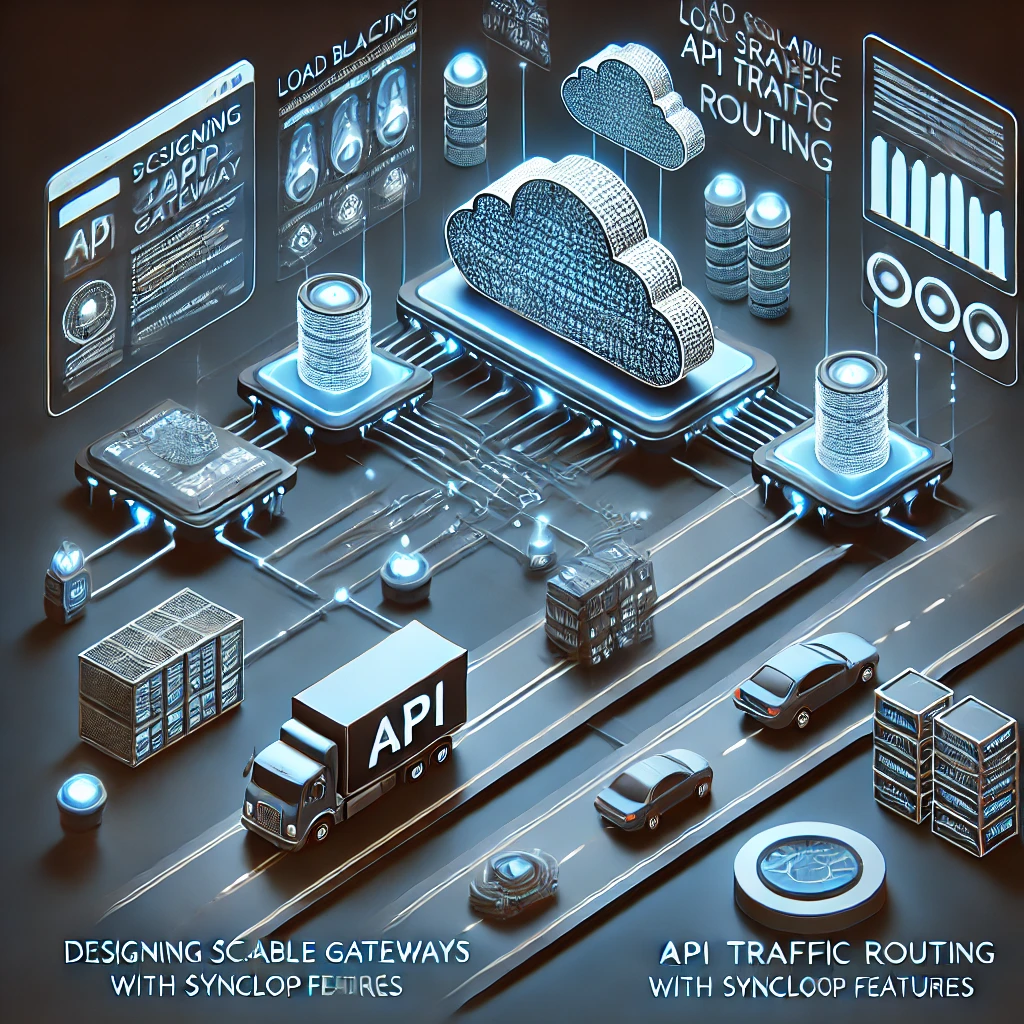Designing Scalable API Gateways with Syncloop Features

Importance of Scalable API Gateways
Scalable API gateways are vital for:
- Handling Increased Traffic: Manage growing user bases and request volumes without performance degradation.
- Ensuring High Availability: Maintain service reliability during traffic spikes or outages.
- Enhancing Security: Centralize authentication, authorization, and data validation.
- Optimizing Performance: Enable caching, load balancing, and request aggregation.
Syncloop simplifies the creation and management of scalable gateways, enabling developers to focus on delivering exceptional user experiences.
Key Features of Syncloop for API Gateways
1. Traffic Management
Distribute traffic effectively across services with load balancing and routing controls.
2. Dynamic Scaling
Automatically scale resources to handle varying traffic demands.
3. Workflow Automation
Automate complex gateway workflows, such as authentication, transformation, and caching.
4. Real-Time Monitoring
Track API performance, usage, and error rates with Syncloop’s monitoring tools.
5. Secure Communication
Implement token-based authentication, encryption, and role-based access controls to protect APIs.
6. Customizable Rules
Define routing, throttling, and transformation rules to tailor gateway behavior to specific requirements.
Steps to Design Scalable API Gateways with Syncloop
Step 1: Define Gateway Requirements
- Identify the key functionalities your gateway needs to handle, such as:
- Traffic routing.
- Request validation.
- Caching and load balancing.
- Determine scalability requirements based on expected traffic patterns.
Step 2: Configure Gateway Workflows
- Use Syncloop’s workflow designer to automate tasks, such as:
- Authentication and token validation.
- Request and response transformations.
- Rate limiting and throttling.
- Incorporate conditional logic to handle edge cases dynamically.
Step 3: Implement Traffic Management
- Set up load balancing rules to distribute traffic across backend services or regions.
- Use Syncloop’s traffic routing tools to direct requests based on:
- Geographic location.
- Service availability.
- Request types.
Step 4: Enable Dynamic Scaling
- Configure Syncloop to allocate additional resources during traffic surges automatically.
- Define scaling policies based on metrics like latency, throughput, or request rates.
Step 5: Monitor and Optimize
- Use Syncloop’s real-time monitoring dashboard to track:
- API latency and response times.
- Error rates and retry counts.
- Usage patterns across endpoints.
- Analyze data to identify bottlenecks and optimize performance.
Step 6: Secure Gateway Operations
- Implement authentication and authorization workflows to validate API requests.
- Encrypt sensitive data in transit and at rest.
- Apply role-based access controls to restrict gateway configurations to authorized personnel.
Real-World Applications
1. E-Commerce Platforms
- Use Case: Manage high-volume traffic for product catalogs, user accounts, and payment systems.
- Features Used: Load balancing, dynamic scaling, traffic routing.
2. Media Streaming Services
- Use Case: Handle large-scale requests for video content while ensuring low-latency delivery.
- Features Used: Real-time monitoring, caching, traffic management.
3. Healthcare Systems
- Use Case: Securely route sensitive medical data across multiple APIs.
- Features Used: Secure communication, role-based access, real-time monitoring.
4. IoT Ecosystems
- Use Case: Process and route data streams from connected devices efficiently.
- Features Used: Workflow automation, dynamic scaling, error handling.
Best Practices for Scalable API Gateways
- Optimize Routing Rules: Use intelligent routing to minimize latency and maximize resource utilization.
- Monitor Continuously: Track performance metrics to detect and resolve issues proactively.
- Leverage Automation: Simplify complex tasks like validation and transformation with automated workflows.
- Ensure Security: Protect APIs with authentication, encryption, and strict access controls.
- Plan for Growth: Design gateways to handle future traffic increases and evolving application needs.
Why Choose Syncloop for API Gateways?
Syncloop offers an intuitive platform for building and managing API gateways, combining automation, scalability, and security. Its real-time monitoring, traffic management, and workflow capabilities ensure reliable and high-performing gateways.
Conclusion
Scalable API gateways are indispensable for modern applications, providing the foundation for secure, efficient, and reliable API interactions. Syncloop simplifies the complexities of gateway design and management, empowering developers to create solutions that scale effortlessly. By leveraging Syncloop’s tools, you can build gateways that meet the demands of today’s dynamic digital environments.
Back to Blogs